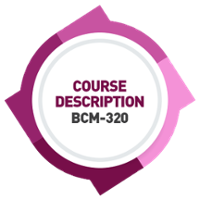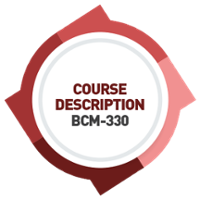Overview of BCM-320 (Session 1 & 2)
Executing Tests and Exercises
![[ITL] [6] [TE] Training-led BCM Implementation: Executing Tests and Exercises](https://no-cache.hubspot.com/cta/default/3893111/8971336e-4d4d-4ef5-b274-96b552356db5.png) This is the final course and implementation stage, during which you are about to attend the third module or one-day onsite BCM workshop organised in-house. This one-day course (module with two three-hour sessions for online blended learning) can be conducted to learn how testing and exercising are conducted.
This is the final course and implementation stage, during which you are about to attend the third module or one-day onsite BCM workshop organised in-house. This one-day course (module with two three-hour sessions for online blended learning) can be conducted to learn how testing and exercising are conducted.
This article is the seventh and last instalment of the "Training-led Implementation" series. This is the reading for participants embarking on a BCM implementation using training to develop, implement and finalize its BCM program for an organisation.
One rationale for this module is to ensure that the BU BCM Coordinators can conduct simple tabletop exercises for their respective business units. Another reason is to have a tabletop exercise conducted for all the participants, as it serves as an actual test or training conducted by the organisation, which can also be used for audit purposes.

 When the business continuity plan is complete, the next logical step is to ensure it works as intended. If there are errors, omissions, or unforeseen side effects, they are identified and addressed.
When the business continuity plan is complete, the next logical step is to ensure it works as intended. If there are errors, omissions, or unforeseen side effects, they are identified and addressed.
This module aims to equip participants with the know-how to plan and execute a test or exercise. Participants should apply this knowledge with their respective business units and complete one testing cycle with them.
The process of conducting the "Testing and Exercising" module or "TE" in the Training-led BCM Implementation is as follows:
1. Supplementary Readings
Participants will receive emails containing bite-size information on Testing and Exercising. This will introduce them to the fundamental concepts ahead of the workshop and help them optimize their time there.
What should participants do "Before" the Workshop?
Participants are encouraged to:
- Read through the supplementary material and try to write down any questions they may have on TE.
- Complete the E-Learning module "Testing and Exercising."
- Download the TE templates from the eCampus Portal.
- Complete the TE templates (Design Profile) with the help of the "Guidance Notes" before attending the online workshop.
It is important to note that the workshop is a 1-time group event. Hence, participants must lock this event in their calendars. No repeat workshop will be conducted for absent participants.
2. Facilitated Workshop
 An [Online or Onsite] workshop is conducted to guide business unit BCM coordinators to use the findings from the earlier phases to:
An [Online or Onsite] workshop is conducted to guide business unit BCM coordinators to use the findings from the earlier phases to:
- Design and plan for a test or exercise
- Execute the test or exercise
- Report the results and follow-ups of the test or exercise
The first part of the workshop focuses on teaching participants about the principles and theories of testing and exercising. The second part will allow participants to learn by having them design an exercise and execute it with their coursemates.
Templates are used to facilitate the above testing and exercising processes.
What should participants do "During" the workshop?
Participants will use the templates to design and conduct a mini-exercise in class. All templates are to be completed and submitted to the facilitator at the end of the workshop.
The soft copy of the TE templates will be sent to participants before the workshop; participants should load the templates onto their laptops and have them available during the workshop.
 Participants should also bring the templates from the earlier phases to the workshop.
Participants should also bring the templates from the earlier phases to the workshop.
The above will be done in an online workshop using the ZOOM video-conferencing application.
It is important to note that the workshop is a 1-time group event. Hence, participants must lock this event in their calendars.
Value-Adding Service
Access to the eLearning module is subject to BCM Institute's agreement with the in-house organization:
3. Demonstration
The workshop facilitator will briefly demonstrate how a simple tabletop exercise could be conducted. This demonstration is carried out before participants attempt to design and execute their tabletop exercise.
This module completes the cycle of business continuity planning based on the "Training-led Implementation" series for the three BCM competency training modules.
4. Consultation with Project Team Leader [Online]
After the workshop, participants and the BU BCM Coordinators will have one week to complete and submit the finalised TE templates (Design Profile and Test Evaluation Form) to their Organisation BCM Coordinator, who will consolidate them into the TE Folder.
 Optional: A complimentary one-hour consultation session has been arranged for the Organisation's BCM Coordinator to review the report with the workshop facilitator. This session is subject to the initial conditions and class size as agreed upon during the start of the project.
Optional: A complimentary one-hour consultation session has been arranged for the Organisation's BCM Coordinator to review the report with the workshop facilitator. This session is subject to the initial conditions and class size as agreed upon during the start of the project.
What Preparation does the Organisation BCM Coordinator need to do "Before" the consultation session:
- Get all BU BCM Coordinators to submit their finalised TE template after attending the instructor's online session. The BU BCM Coordinators are expected to edit their business unit or BU's TE template after the online workshop session.
- Process the TE templates from all business units and open a TE folder to contain all of the tests and exercise results and documentation for submission to the organisation's management and future review by auditors.
- [Optional] Before the consultation session, the designated facilitator will email the complete set of comments.
- [Optional] Book and attend the consultation session at the appointed time (on ZOOM)
![TMM [WSQ BCM-330]](https://no-cache.hubspot.com/cta/default/3893111/c627ff39-29e6-454d-b246-bf60b6d4ec12.png)
Training of New Coordinators
If you have a new business unit BCM coordinator and need the knowledge for "Testing and exercising", your colleague can attend a similar public course. This course is BCM-330 (Course code), and it is titled "Testing and Exercising Business Continuity Plans"
Once this session is completed, you can conduct tabletop exercises for your department.
6. Future Readings on TE
 Suppose you want more profound insight into testing and exercising processes and techniques. In that case, this BCM Planning Series book "Testing & Exercising Your Business Continuity Plan" may be a helpful resource for your future learning journey.
Suppose you want more profound insight into testing and exercising processes and techniques. In that case, this BCM Planning Series book "Testing & Exercising Your Business Continuity Plan" may be a helpful resource for your future learning journey.


![[BCM] [EL] [L7] Testing and Exercising](https://no-cache.hubspot.com/cta/default/3893111/c4221721-952a-4ca8-9656-a3b851cf3c0c.png)
![[ITL] [2] [RAR] Training-led BCM Implementation: Running the Risk Assessment](https://no-cache.hubspot.com/cta/default/3893111/667b23cb-0ff8-4d09-ae4e-0b54f000e353.png)
![[ITL] [4] [BCS] Training-led BCM Implementation: Evaluating the Business Continuity Strategy](https://no-cache.hubspot.com/cta/default/3893111/fed0fded-5b6a-42da-95b6-2788b0597ab1.png)
![[ITL] [3] [BIA] Training-led BCM Implementation: Executing the Business Impact Analysis](https://no-cache.hubspot.com/cta/default/3893111/d00710d6-0650-45b7-97aa-7ccde268d7b9.png)









